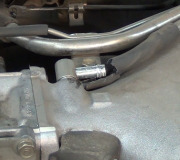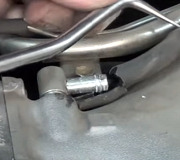The next thing would be to connect a scanner to view live data, in particular. "Idle air percent". Ford does almost everything differently than all other manufacturers, and how they control idle speed is no exception. They vary the average voltage to the solenoid to make it pull more or less against spring pressure to pull the air valve open. If you see that percentage being called for is high, the Engine Computer is requesting a high idle speed in response to something. Ford had a lot of trouble with their coolant temperature sensors in the early '90s, and high idle is one of the symptoms. If you see the computer is calling for a very low idle air percentage, it is trying to reduce idle speed but is not having success. That is almost always due to a vacuum leak.
Another approach is to borrow a smoke machine to inject a white, non-toxic smoke at 2psi into a vacuum port, then you watch for places it sneaks out. You might find that at an auto parts store that rents or borrows tools. We use those to find leaks in the vapor recovery systems on '96 and newer vehicles. Small leaks are virtually impossible to locate without that machine.
Friday, August 21st, 2015 AT 9:23 PM



